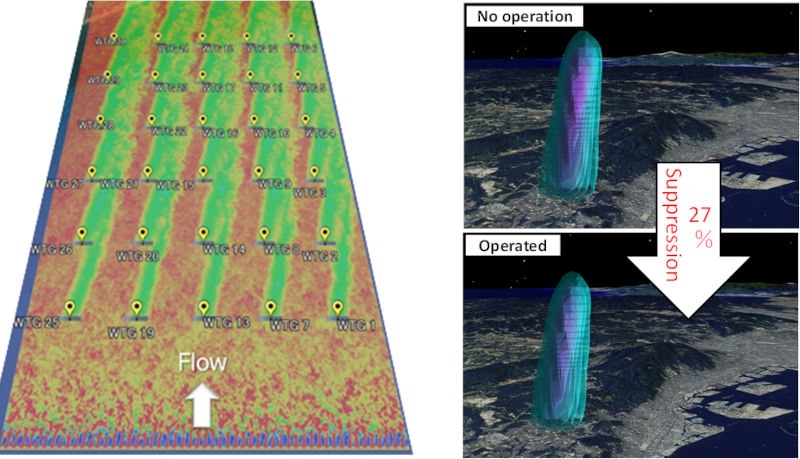Progress Report
Heavy Rainfall Control for Living Together with Isolated-Convective Rainstorms and Line-Shaped Rainbands[1] Development of engineering methods based on numerical computations
Progress until FY2024
1. Outline of the project
Develop a numerical weather model that can express heavy rains from when it occurs, and examine interventions to reduce heavy rains using a meteorological approach combining numerical weather models, field observations, and laboratory experiments. Develop multiple feasible engineering methods based on these examinations, while monitoring the scale of sudden heavy rains and linear convective heavy rains. Additionally, focus on the causes and early stages of heavy rain occurrence, and suppress the intensity and frequency of heavy rains.
Regarding physical quantities that can be manipulated step-by-step during cumulonimbus cloud formation, first, an offshore curtain will be used to reduce water vapor, followed by the use of a fan to diffuse heat and air current vortices. Furthermore, wind farms will be used to weaken the convergence of wind, and finally, seeding will be employed to change the cloud and rain particle formation.
These processes constitute a multi-stage manipulation technique.

2. Outcome so far
①Control of urban localized precipitation by thermal intervention
Simulation analyses have revealed that reducing heat emissions from buildings and the ground is an effective measure for controlling cumulonimbus clouds that develop rapidly in summer afternoons, as well as the localized precipitation they cause.

②Effectiveness of using wind turbines to suppress Isolated-Convective rainstorms
High-resolution simulations were performed to analyze the phenomenon of airflow reduction in the wake of wind turbines. Subsequent sensitivity experiments assessed the impact of variations in wind direction and turbulence on wake formation. Additionally, we explored the modification of heavy rainfall patterns by artificially manipulating near-ground wind speeds to hypothetically reduce the wind intensity. The experimental results from case studies of sudden heavy rainfall in Togagawa, Kobe City in 2008 indicated a 27% reduction in rainfall intensity.

③Effect of suppressing linear convective heavy rains by spraying dry ice
We investigated the control of cloud formation by dispersing dry ice into clouds—a process known as cloud seeding. By hypothetically increasing ice crystal nucleation through dry ice dispersion, we managed to reduce the maximum 24-hour precipitation by 15% during the heavy rainfall event of July 2020 in a simulation.

④Suppression effect of linear convective torrential rainfall using offshore curtains
We also explored the suppression of torrential rainfall by inhibiting the high inflow of water vapor from the sea. A numerical simulation using a 1-km offshore curtain during the 2017 northern Kyushu heavy rainstorm indicated that this curtain reduced the 3-hour rainfall by 34%.

3. Future plans
This research aims to continue advancing numerical weather models to evaluate the impact of interventions on sudden and linear convective heavy rains. We also aim to conduct sensitivity experiments to determine if small-scale interventions can mitigate the development of heavy rains.